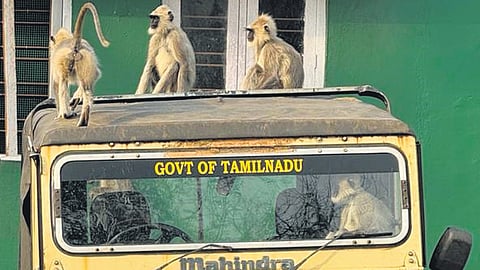

CHENNAI: The state health and forest authorities on Tamil Nadu-Karnataka border beefed up surveillance as Kyasanur Forest Disease (KFD), also known as Monkey fever, cases are on the rise in the neighbouring state.
So far, two people have died due to the infection in Karnataka and 103 people contracted the infection in three central Western Ghat districts of Shivamogga, Uttara Kannada and Chikkamagaluru. A recent study by the Indian Council for Medical Research and the National Institute of Virology has confirmed the deadly virus was endemic in two more ghat districts - Mysuru and Hassan - which are closer to TN.
Kumar Pushkar, APCCF (Wildlife), Karnataka told TNIE, “So far, there is no outbreak in Mysuru region. This year, as on date, the disease is confined to central Western Ghat districts.”
However, officials said since this year monsoon has failed in Karnataka and in the bordering districts of TN, the probability of virus spread is very high. The disease is seasonal and more cases are reported during dry season. The high-risk category population is the forest staff including anti-poaching watchers, forest guards and foresters.
In Mudumalai Tiger Reserve (MTR) in the Nilgiris, which is contiguous with Bandipur National Park, there are 200 field staff who spend close to 6 hours per day in the forest and potentially exposing themselves to the virus. Hard ticks are the reservior of KFD virus. Monkeys, rodents and shrews are common hosts.
“Next few months is going to be tough. Forest fires will be a norm which will send the ticks flying and exposing our field staff to the virus. We are closely looking out for sick monkeys,” a forest official said.
When contacted, TS Selvavinayagam, director of Public Health and Preventive Medicine, said, “We are not initiating the vaccination drive. The confirmed KFD cases are 500 km away from Tamil Nadu border villages. An advisory has been issued for the forest department and local public health authorities to look out for falling monkeys and daily fever surveillance. If there is an outbreak close to our border, vaccination will done for the high-risk population.”
Sources said KFD vaccination was given for 6 years till 2020 for forest field staff in the Nilgiris, but post Covid-19 it was not given.
A real menace
Forest officials in TN said they are closely monitoring sick monkeys
What is KFD?
1 Kyasanur forest disease is caused by a virus and was first identified in 1957 from Kyasanur forest in Karnataka.
2 Since then, between 400-500 human cases per year have been reported.
3 Hard ticks are the reservior of KFD virus. Monkeys, rodents and shrews are common hosts.
Transmission
Transmission to humans may occur after a tick bite or contact with an infected animal, most importantly a sick or recently dead monkey
Signs and symptoms
After an incubation period of 3-8 days, the symptoms of KFD begin suddenly with chills, fever and headache. Severe muscle pain with vomiting, gastrointestinal symptoms and bleeding may occur 3-4 days after the onset of the initial symptoms
Treatment
There is no specific treatment for KFD, but early hospitalisation and supportive therapy is important